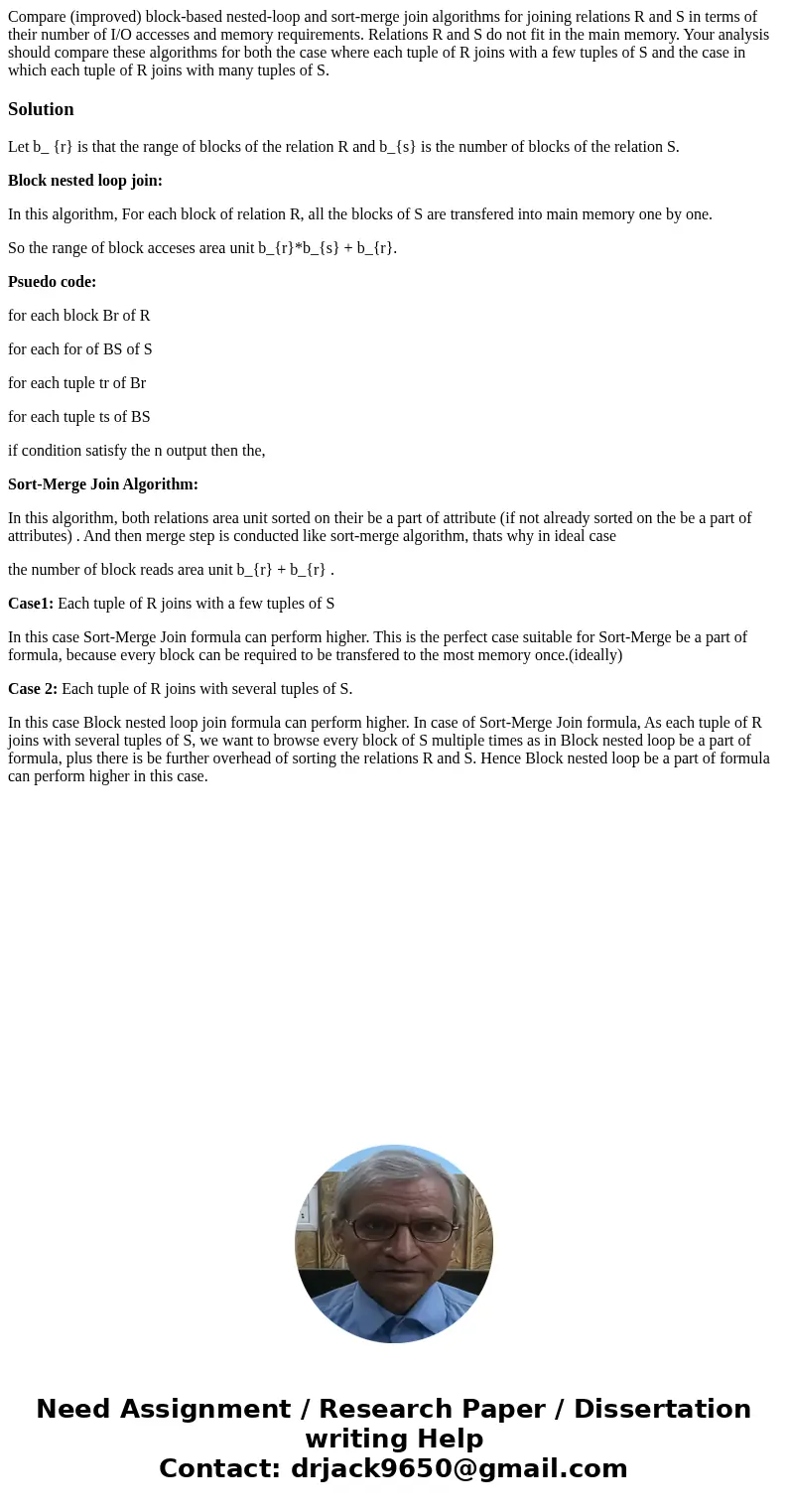Compare improved blockbased nestedloop and sortmerge join al
Solution
Let b_ {r} is that the range of blocks of the relation R and b_{s} is the number of blocks of the relation S.
Block nested loop join:
In this algorithm, For each block of relation R, all the blocks of S are transfered into main memory one by one.
So the range of block acceses area unit b_{r}*b_{s} + b_{r}.
Psuedo code:
for each block Br of R
for each for of BS of S
for each tuple tr of Br
for each tuple ts of BS
if condition satisfy the n output then the,
Sort-Merge Join Algorithm:
In this algorithm, both relations area unit sorted on their be a part of attribute (if not already sorted on the be a part of attributes) . And then merge step is conducted like sort-merge algorithm, thats why in ideal case
the number of block reads area unit b_{r} + b_{r} .
Case1: Each tuple of R joins with a few tuples of S
In this case Sort-Merge Join formula can perform higher. This is the perfect case suitable for Sort-Merge be a part of formula, because every block can be required to be transfered to the most memory once.(ideally)
Case 2: Each tuple of R joins with several tuples of S.
In this case Block nested loop join formula can perform higher. In case of Sort-Merge Join formula, As each tuple of R joins with several tuples of S, we want to browse every block of S multiple times as in Block nested loop be a part of formula, plus there is be further overhead of sorting the relations R and S. Hence Block nested loop be a part of formula can perform higher in this case.

 Homework Sourse
Homework Sourse